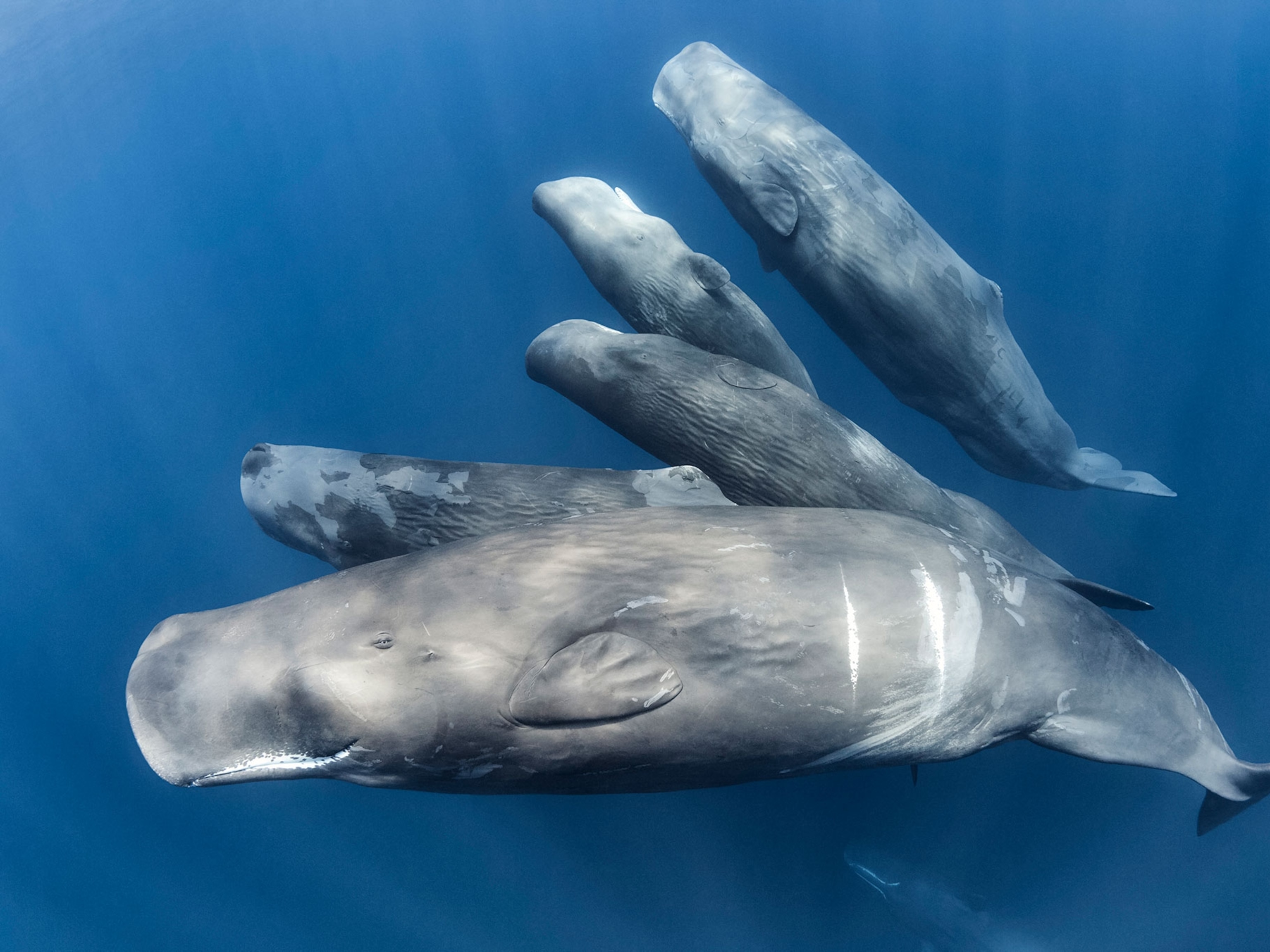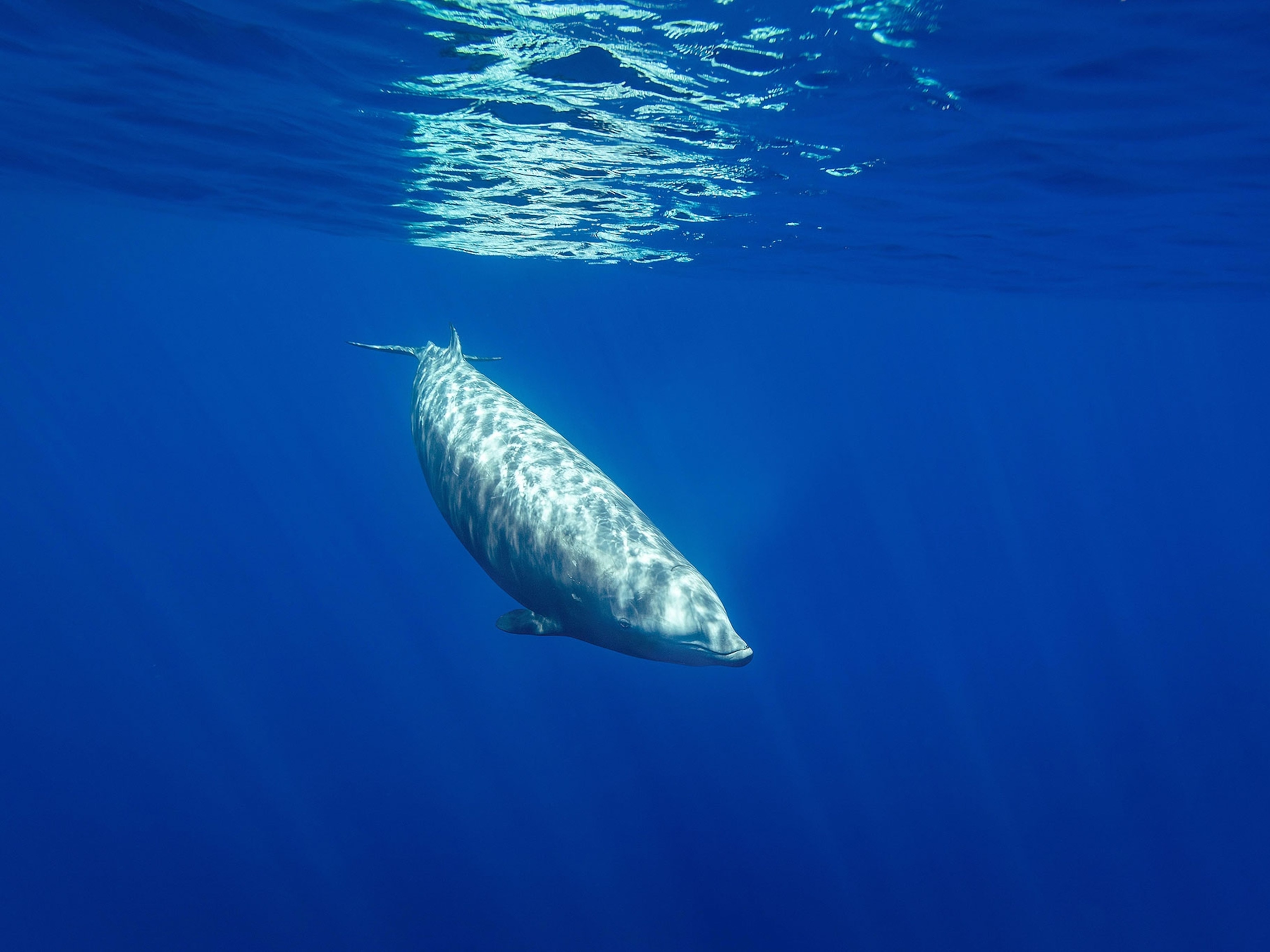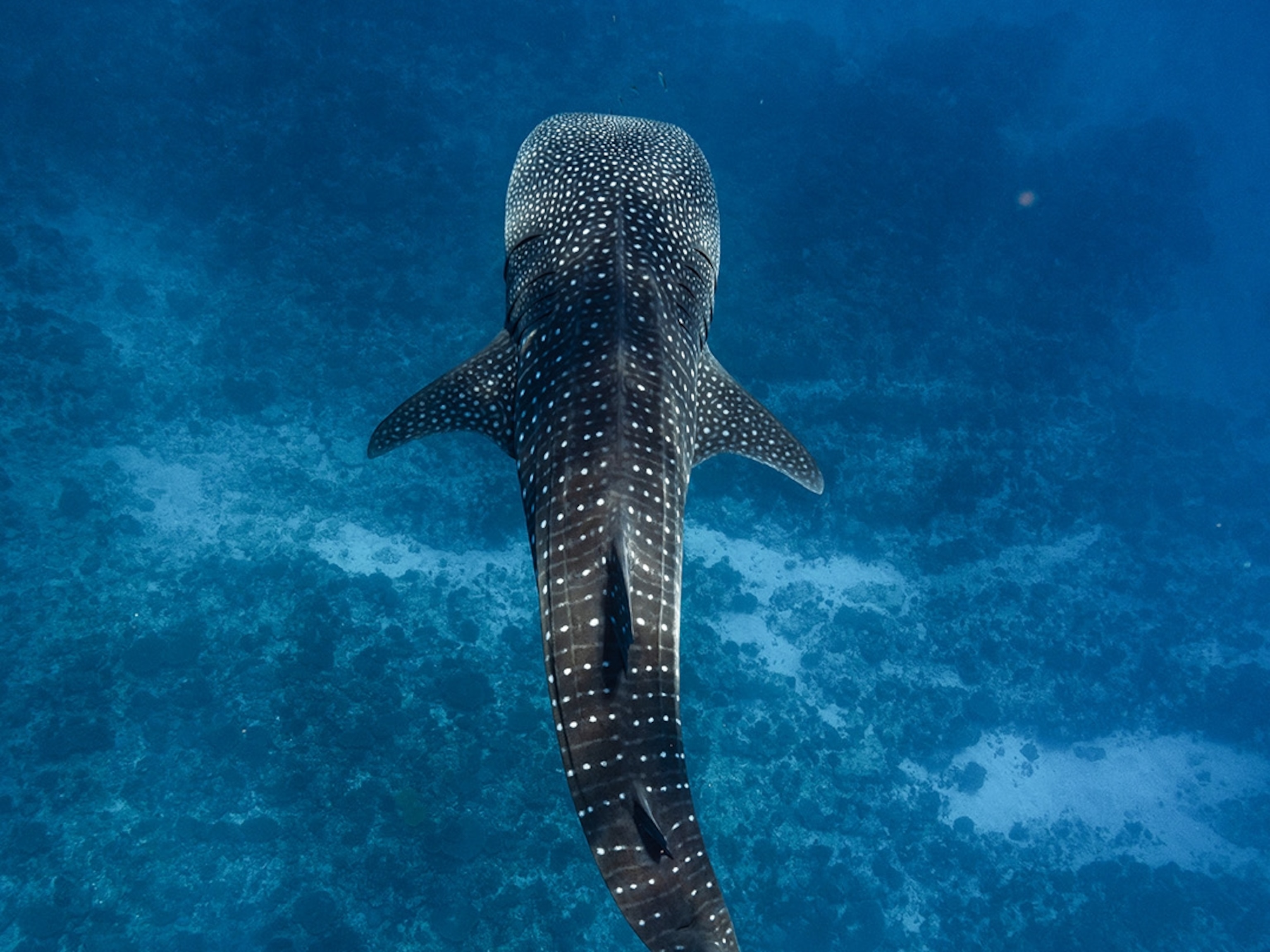
How Diving Mammals Stay Underwater for So Long
Positive charges on oxygen-binding proteins are key to diving mammals' success.
Imagine holding your breath while chasing down a giant squid (Architeuthis dux)—multi-tentacled monsters wielding suckers lined with tiny teeth—in freezing cold water, all in the dark. That would take a lot out of anybody, yet sperm whales (Physeter macrocephalus) do this day in and day out.
The ability to dive underwater for extended periods is a specialized feat marine and aquatic mammals have evolved over millions of years. Diving mammals will slow their heart rate, stop their breathing, and shunt blood flow from their extremities to the brain, heart, and muscles when starting a dive. (Related: "Can Diving Mammals Avoid the Bends?")
But champion divers, such as elephant seals, can hold their breath for about two hours. "It was known that they rely on internal oxygen stores when they're down there," said Michael Berenbrink, a zoologist at the University of Liverpool, England, who specializes in how animals function.
But there was something else going on in the bodies of these animals that researchers were missing, until now.
So what's new? A study published June 13 in the journal Science reports that diving mammals—including whales, seals, otters, and even beavers and muskrats—have positively charged oxygen-binding proteins, called myoglobin, in their muscles.
This positive characteristic allows the animals to pack much more myoglobin into their bodies than other mammals, such as humans—and enables diving mammals to keep a larger store of oxygen on which to draw while underwater.
Why is it important? Packing too many proteins together can be problematic, explained Berenbrink, a study co-author, because they clump when they get too close to each other.
"This [can cause] serious diseases," he added. In humans, ailments like diabetes and Alzheimer's can result.
But myoglobin is ten times more concentrated in the muscles of diving mammals than it is in human muscles, Berenbrink said.
Since like charges repel each other—think of trying to push together the sides of two magnets with the same charge—having positively charged myoglobin keeps the proteins from sticking to each other.
What does this mean? Berenbrink and colleagues found this positive charge in the myoglobin of all the diving mammals they examined, although some had larger positive charges than others.
This study provides a nice example of convergent evolution—where different lineages living in similar environments evolve the same answer to a common problem, wrote Randall Davis, a biologist who studies the physiology and behavior of marine birds and mammals at Texas A&M University in Galveston, in an email.
"[And it] sheds light on the origins of myoglobin and its role in extending breath-hold duration in aquatic mammals," said Davis, who was not involved in the study.
"It will raise some controversy, but at the same time I think it's going to stimulate more research, which I couldn't be more pleased about," said Jerry Kooyman, an animal physiologist at the Scripps Institution of Oceanography in San Diego who was not involved in the study.
Kooyman cautions that some of what’s known about aspects of diving behavior, such as dive duration, is based on small sample sizes. So researchers must be careful when trying to draw connections between diving ability and how much myoglobin a species can claim.
What's next? Berenbrink hopes to look at the myoglobin in humans from societies with a history of diving behavior to see if they show similar changes in their oxygen-binding protein.
"There are ethnic groups around the world who have relied on diving to get food. Some of these humans can stay underwater for a very long time," he said.





